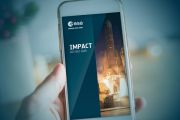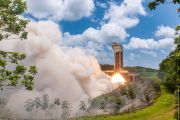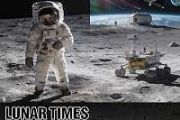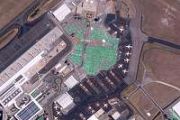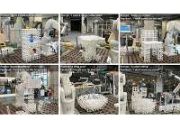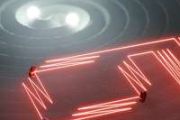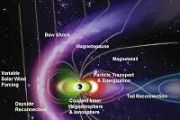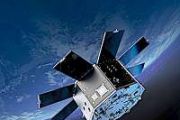
Copernical Team
Designing a next generation hypersonic demonstrator
 Today, large commercial jets fly around 580 mph. The Lockheed SR-71 Blackbird introduced in 1966 is the fastest supersonic jet vehicle in the world, reaching speeds of more than 2,200 mph, nearly four times faster than a commercial jet.
The fastest rocket-powered hypersonic vehicle developed in the late 1960s carrying a human has been the North American X-15, reaching a top speed of 4,520
Today, large commercial jets fly around 580 mph. The Lockheed SR-71 Blackbird introduced in 1966 is the fastest supersonic jet vehicle in the world, reaching speeds of more than 2,200 mph, nearly four times faster than a commercial jet.
The fastest rocket-powered hypersonic vehicle developed in the late 1960s carrying a human has been the North American X-15, reaching a top speed of 4,520 Key facts about Neuralink, Musk's cyborg gamble
 Neuralink, Elon Musk's brain-implant company, has won US approval to test on humans. Here is what to know about the multi-billionaire's dream project to enable the human brain to communicate directly with computers.
- Cyborg future? -
Neuralink is a neurotechnology company co-founded by Musk along with a team of scientists and engineers in 2016 to build direct communication channels betw
Neuralink, Elon Musk's brain-implant company, has won US approval to test on humans. Here is what to know about the multi-billionaire's dream project to enable the human brain to communicate directly with computers.
- Cyborg future? -
Neuralink is a neurotechnology company co-founded by Musk along with a team of scientists and engineers in 2016 to build direct communication channels betw Australia and New Zealand sign major contract with Inmarsat for SouthPAN satellite service
 Every major industry across Australia and New Zealand, from transport and construction to resources and agriculture, will gain positioning and navigation benefits from the Southern Positioning Augmentation Network's (SouthPAN) new satellite service.
With the signing of a contract with Inmarsat Australia for the new service on one of Inmarsat's three new I-8 satellites, SouthPAN partners Ge
Every major industry across Australia and New Zealand, from transport and construction to resources and agriculture, will gain positioning and navigation benefits from the Southern Positioning Augmentation Network's (SouthPAN) new satellite service.
With the signing of a contract with Inmarsat Australia for the new service on one of Inmarsat's three new I-8 satellites, SouthPAN partners Ge Technicians apply thermal protection material to SLS
 Technicians at NASA's Marshall Space Flight Center in Huntsville, Alabama, have completed applying thermal protection system material to the launch vehicle stage adapter (LVSA) of NASA's SLS (Space Launch System) rocket for Artemis III, which will land astronauts on the Moon to advance long-term lunar exploration and scientific discovery and inspire the Artemis Generation. The LVSA is a cone-sha
Technicians at NASA's Marshall Space Flight Center in Huntsville, Alabama, have completed applying thermal protection system material to the launch vehicle stage adapter (LVSA) of NASA's SLS (Space Launch System) rocket for Artemis III, which will land astronauts on the Moon to advance long-term lunar exploration and scientific discovery and inspire the Artemis Generation. The LVSA is a cone-sha Arabsat Badr-8 launched
 The Airbus-built Arabsat Badr-8 telecommunications satellite has been successfully launched from Cape Canaveral, Florida. Based on Airbus' latest geostationary Eurostar Neo satellite, Badr-8 will provide connectivity for users across Europe, Middle East, Africa, and central Asia.
The spacecraft is also equipped with a world first, Airbus' innovative space demonstrator TELEO to provide spac
The Airbus-built Arabsat Badr-8 telecommunications satellite has been successfully launched from Cape Canaveral, Florida. Based on Airbus' latest geostationary Eurostar Neo satellite, Badr-8 will provide connectivity for users across Europe, Middle East, Africa, and central Asia.
The spacecraft is also equipped with a world first, Airbus' innovative space demonstrator TELEO to provide spac NASA pursues Lunar Terrain Vehicle services for Artemis Missionm
 NASA is seeking industry proposals for a next-generation LTV (Lunar Terrain Vehicle) that will allow astronauts to go farther and conduct more science than ever before as they explore the south polar region of the Moon during Artemis missions.
Artemis astronauts will drive to explore and sample more of the lunar surface using the LTV than they could on foot. NASA will contract LTV as a ser
NASA is seeking industry proposals for a next-generation LTV (Lunar Terrain Vehicle) that will allow astronauts to go farther and conduct more science than ever before as they explore the south polar region of the Moon during Artemis missions.
Artemis astronauts will drive to explore and sample more of the lunar surface using the LTV than they could on foot. NASA will contract LTV as a ser NASA, Boeing provide update on Starliner flight test readiness
 NASA and Boeing completed a joint Crew Flight Test checkpoint review May 25 ahead of the first flight of Starliner with astronauts to the International Space Station. During the checkpoint, mission teams reviewed open work ahead of launch planned no earlier than July 21, including emerging issues that need a path to closure prior to a decision to fuel the spacecraft in June.
"We are taking
NASA and Boeing completed a joint Crew Flight Test checkpoint review May 25 ahead of the first flight of Starliner with astronauts to the International Space Station. During the checkpoint, mission teams reviewed open work ahead of launch planned no earlier than July 21, including emerging issues that need a path to closure prior to a decision to fuel the spacecraft in June.
"We are taking Stratolaunch expands fleet with Virgin Orbit's modified Boeing 747
 Stratolaunch has received approval from the U.S. Bankruptcy Court for the District of Delaware to acquire Virgin Orbit's modified Boeing 747 and its related parts and equipment, marking an expansion of Stratolaunch's air-launch fleet. The acquisition is expected to close by July 31, 2023.
Stratolaunch is a technology accelerator that enables reusable and routine hypersonic testing through
Stratolaunch has received approval from the U.S. Bankruptcy Court for the District of Delaware to acquire Virgin Orbit's modified Boeing 747 and its related parts and equipment, marking an expansion of Stratolaunch's air-launch fleet. The acquisition is expected to close by July 31, 2023.
Stratolaunch is a technology accelerator that enables reusable and routine hypersonic testing through Dedication to lunar research pays off for China's Chang'e project
 Since 2004, China has been pioneering many aspects of lunar exploration with the Chang'e project, of which all five missions were successful in obtaining new information about the Moon. China has been leading the advancement of lunar research and understanding with their Chang'e project since 2004 with no signs of slowing down. The information obtained from Chang'e missions has given humans a mu
Since 2004, China has been pioneering many aspects of lunar exploration with the Chang'e project, of which all five missions were successful in obtaining new information about the Moon. China has been leading the advancement of lunar research and understanding with their Chang'e project since 2004 with no signs of slowing down. The information obtained from Chang'e missions has given humans a mu Ingenuity's high-stakes game of hide and seek
 Even before the end of Ingenuity's primary mission as a technology demonstrator, the helicopter showed that it could provide tactical and scientific scouting for the Perseverance mission. In practice, this hasn't always been possible, but Ingenuity has indeed proven its worth on more than a few occasions over the course of the mission. As mentioned in a previous post, the team was looking forwar
Even before the end of Ingenuity's primary mission as a technology demonstrator, the helicopter showed that it could provide tactical and scientific scouting for the Perseverance mission. In practice, this hasn't always been possible, but Ingenuity has indeed proven its worth on more than a few occasions over the course of the mission. As mentioned in a previous post, the team was looking forwar 






